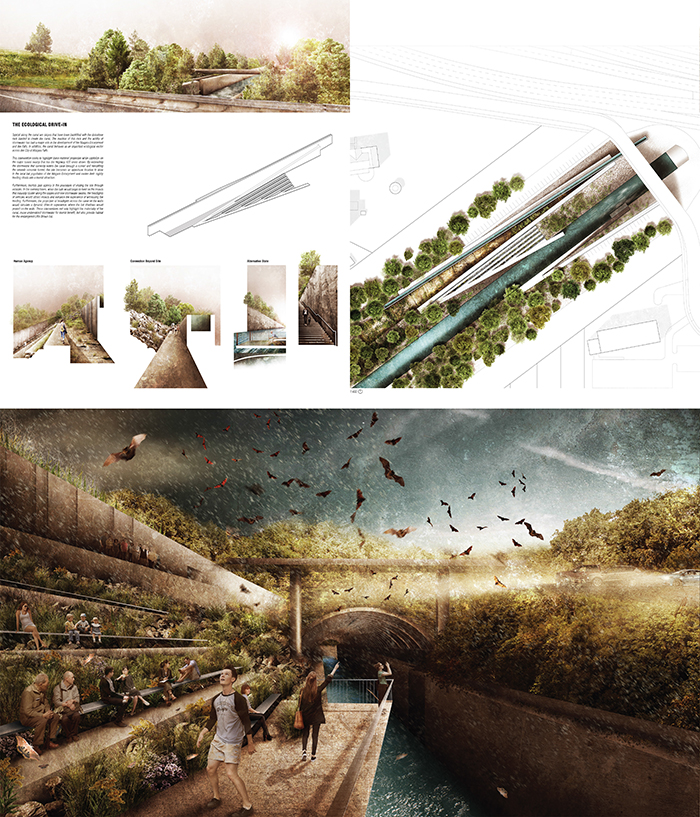MLA Thesis
Niagara False: Revealing the True Power Behind the Spectacle
Niagara Falls is currently packaged as a sublime tourist symbol, yet it is a highly controlled object idealized for consumption. Adjacently located, but completely detached from the tourist experience, is a complex hydroelectric network that receives strictly controlled percentages of Niagara Rivers’ water, as based on a 1950 treaty. With the realities of climate change and lower water levels, the loss in clean hydroelectric energy production will be valued at approximately three billion dollars by 2050, which is partially due to water diversion limitations in favour of the tourist experience at the Falls. This thesis questions how a regional infrastructural system can formulate a new tourist network and an expanded Canadian national identity, while simultaneously benefitting regional ecology, rather than promoting the exotic species found currently throughout the Niagara tourism sector. Consequently, the traditionally segregated energy, tourism, and ecological systems are now united in a robust network that exposes the characteristics of the infrastructure, uses the tourist as an agent of change, and establishes an urgent conversation regarding resource management.






